In the vast and diverse world of the animal kingdom, the size of an animal’s brain relative to its body can offer a fascinating window into its cognitive abilities. From the depths of the oceans to the skies above, these ten animals stand out for their remarkable brain-to-body size ratios, showcasing a wide range of cognitive prowess. Let’s explore each of these creatures, delving into their unique adaptations and intelligence.
1. Bottlenose Dolphin

Dolphins pick up on social cues and demonstrate some serious intellect.
©slowmotiongli/Shutterstock.com
The bottlenose dolphin, an icon of the sea, boasts a colossal brain size relative to its body. These highly intelligent marine mammals exhibit complex social behaviors and advanced problem-solving skills. They are known for their intricate communication through clicks and whistles, enabling them to convey messages and establish social bonds. This communication prowess allows them to navigate the complex underwater world and collaborate effectively.
2. Human

The human brain is responsible for the most significant scientific and technological advances in history.
©PeopleImages.com – Yuri A/Shutterstock.com
Humans have exceptionally developed brains among Earth’s inhabitants, allowing for abstract thinking and innovation. Our mastery of language, mathematics, and technology has shaped history, enabling us to adapt and thrive in an ever-changing world. Through the power of our large brains, we have harnessed knowledge and created societies that span the globe.
3. Elephants
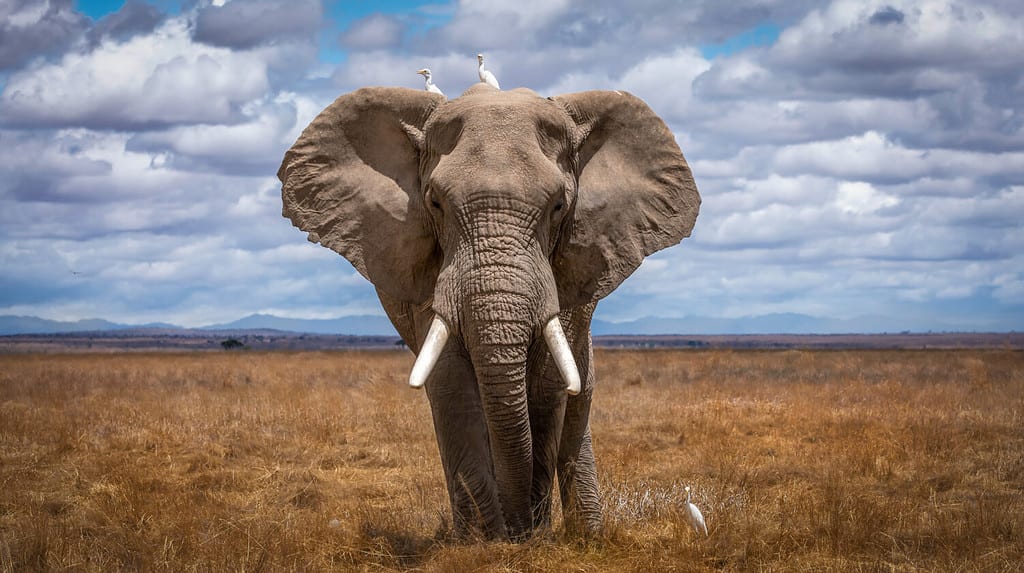
Elephants show signs of empathy and deep communal bonds.
©Cautron Live/Shutterstock.com
Both African and Asian elephants have impressively large brains compared to their massive bodies. These colossal creatures rely on their brains for memory and maintaining intricate social structures within their herds. Elephants display remarkable cognitive abilities, such as recognizing themselves in a mirror, using tools, and even mourning the loss of their fellow elephants. This emotional intelligence enables them to bond with their kin and adapt to changing environments.
4. Chimpanzees
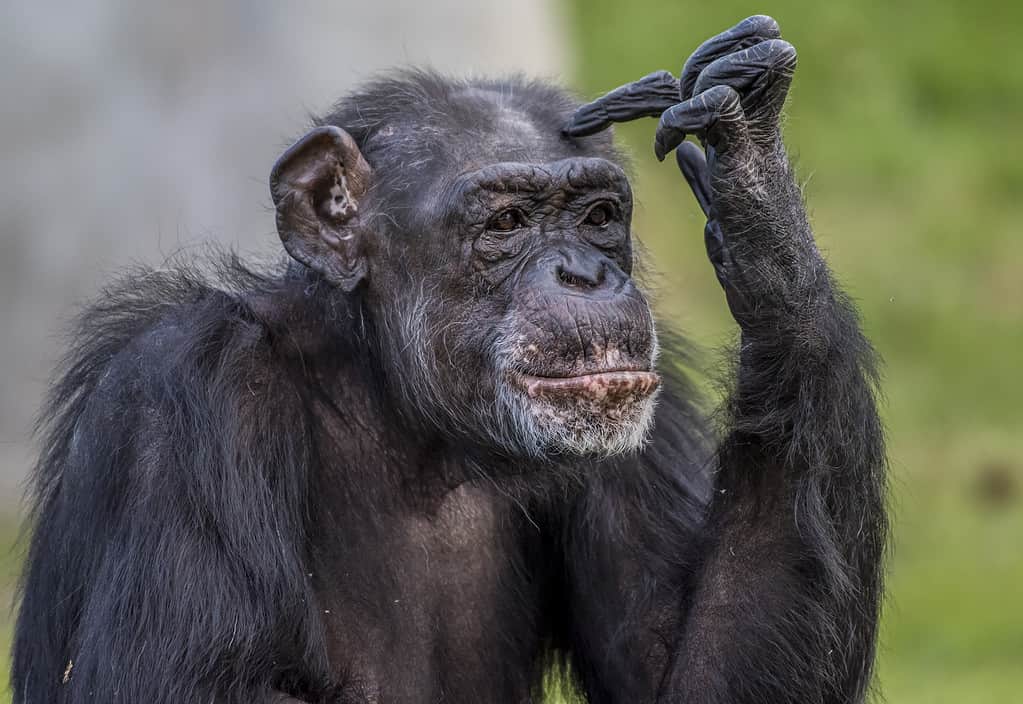
Within chimpanzee communities, it is clear a hierarchy is established.
©Wirestock/iStock via Getty Images
Our closest living relatives in the animal kingdom, chimpanzees, possess relatively large brains for their size. This affords them advanced problem-solving abilities, tool use, and complex social interactions. Their intelligence is evident in their capacity to adapt to diverse environments and establish intricate hierarchies. Their brainpower equips them to forge alliances and solve complicated puzzles within their communities.
5. Ravens

Talking ravens are generally found in zoos and wildlife centers.
©Krasula/Shutterstock.com
Ravens have relatively large brains despite their small size, supporting their cunning and clever behavior. They are proficient problem solvers and have been observed using tools and planning for the future. Their brain size contributes to their adaptability and thriving in various environments. The complexity of their intelligence enables them to make strategic decisions and navigate their dynamic surroundings.
6. Barn Owls
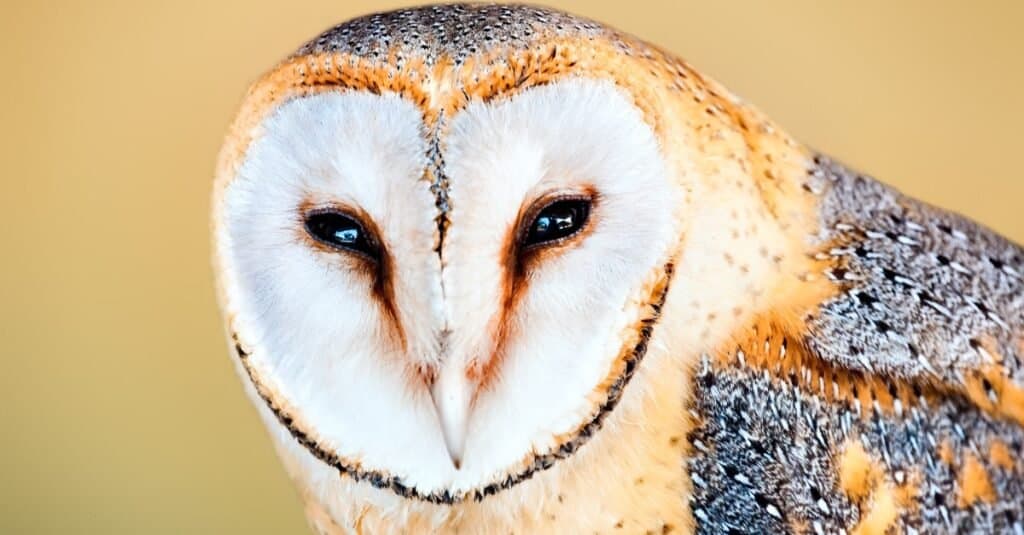
These gorgeous creatures use their intellect for precise hunting.
©iStock.com/vanderje
Exceptional hunters in the night, barn owls possess relatively large brains compared to their size, which is vital for their acute spatial and auditory intelligence. Their brains enable them to process auditory cues with remarkable precision, making them highly efficient hunters in low-light conditions. Their cognitive abilities enhance their survival in their nocturnal world.
7. Cephalopods (Octopuses and Squid)

The average octopus can problem-solve and adapt to changing conditions.
©Olga Visavi/Shutterstock.com
Invertebrates with large brains compared to their body size, cephalopods, including octopuses and squid, demonstrate remarkable problem-solving skills and complex behaviors. Their brains enable them to adapt swiftly to their ever-changing marine environments and outsmart their prey or predators. Their intelligence facilitates intricate hunting techniques and social interactions.
8. Ants
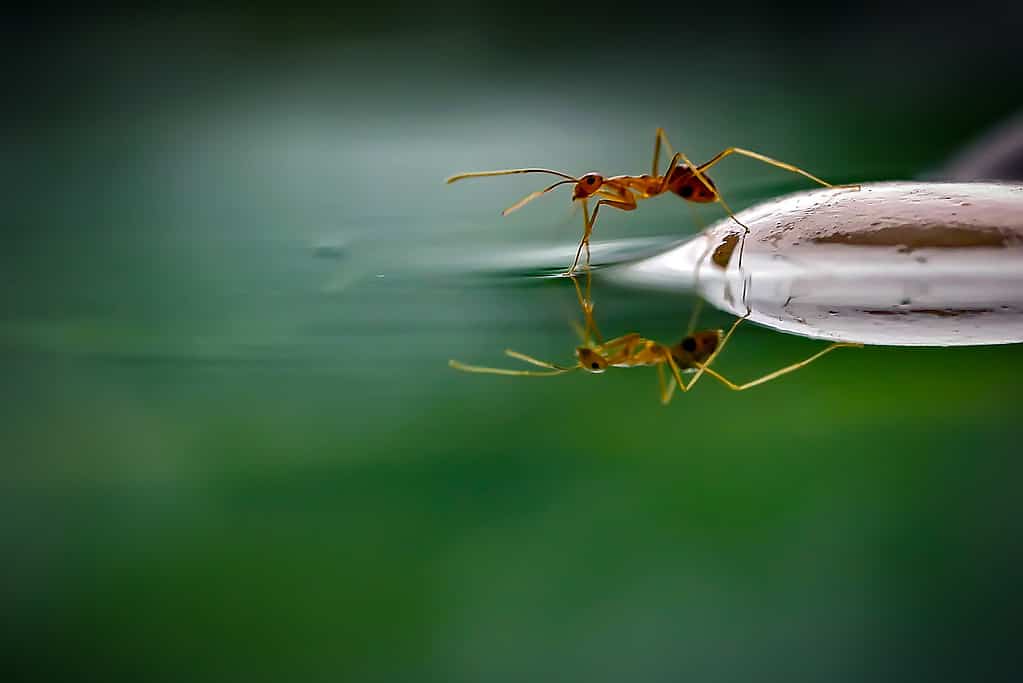
Ants are known for their ability to cooperate and work as a group toward shared goals.
©teguh santosa kedua/Shutterstock.com
These tiny insects with relatively large brains work collectively, showing impressive organization and problem-solving within colonies. Ant brains, though minuscule individually, form a collective intelligence that enables them to manage complex tasks like foraging, building intricate tunnels, and defending their colonies. Their cooperative problem-solving ensures their colony’s survival and prosperity.
9. Honeybees
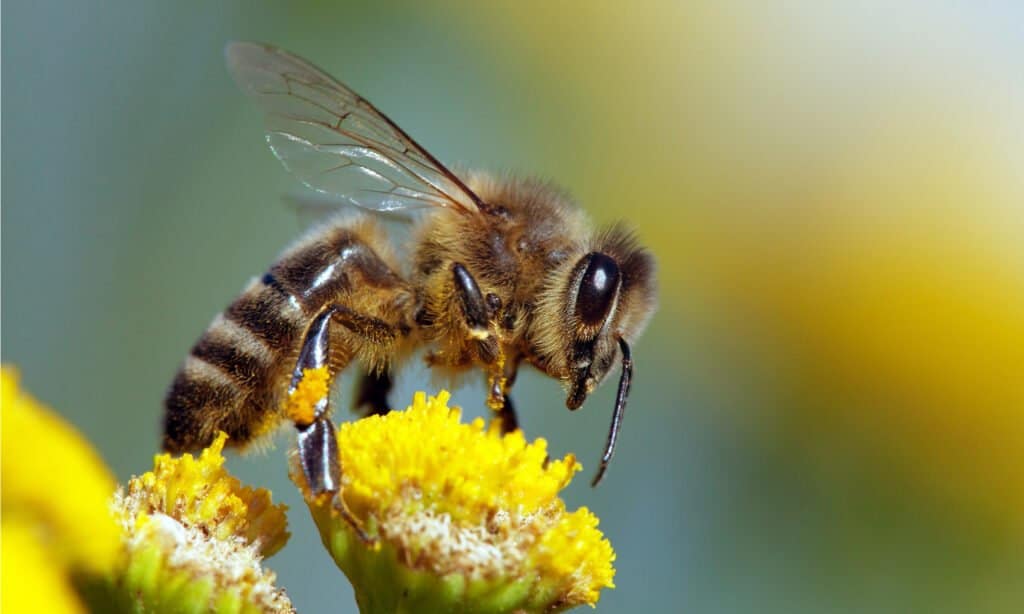
These bees organize to ensure their pollinating efforts are successful.
©Daniel Prudek/Shutterstock.com
Honeybees have relatively large brains for navigation and complex hive activities. They display remarkable memory and communication through dances. Their brains facilitate precise navigation during foraging flights, and their intricate waggle dances convey information about the location of food sources, enabling effective resource allocation within the hive. Their collective decision-making relies on their cognitive abilities.
10. New Caledonian Crows

These particular crows make tools and save them for future use!
©Tiffany Sims/Shutterstock.com
Small birds with relatively large brains, New Caledonian crows are known for their tool-making and problem-solving abilities, including using multiple tools in succession. Their brain size empowers them to create and manipulate tools, displaying adaptability and foresight in their quest for food. Their problem-solving skills reveal a high level of intelligence within the avian world.
These ten animals, each with their unique place in the natural world, exemplify the astonishing diversity of intelligence and cognitive abilities in the animal kingdom. From the dolphins’ intricate communication to the problem-solving prowess of chimpanzees, the cunning nature of ravens, and the specialized abilities of barn owls, these creatures have demonstrated the remarkable potential of the brain relative to body size. Understanding the cognitive capacities of these animals sheds light on the complex and fascinating ways they adapt and interact within their respective ecosystems.
The photo featured at the top of this post is ©
Thank you for reading! Have some feedback for us? Contact the AZ Animals editorial team.







